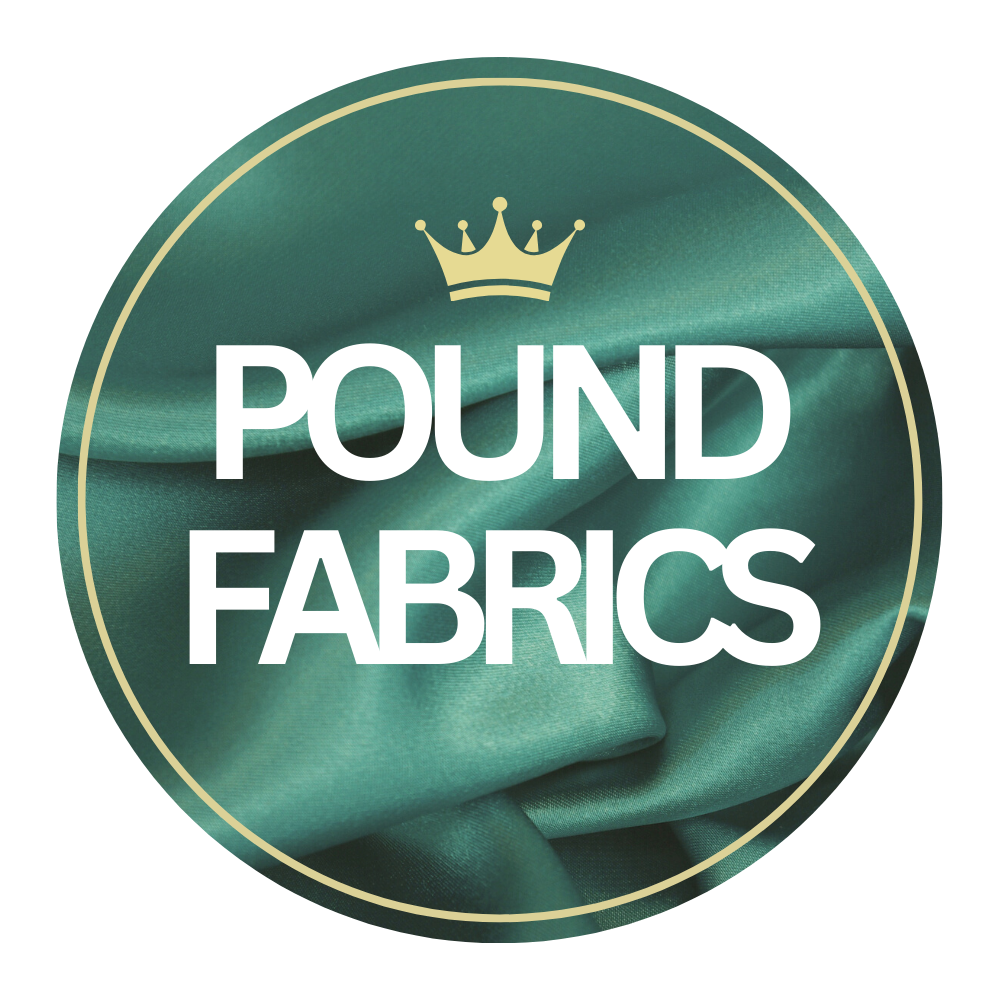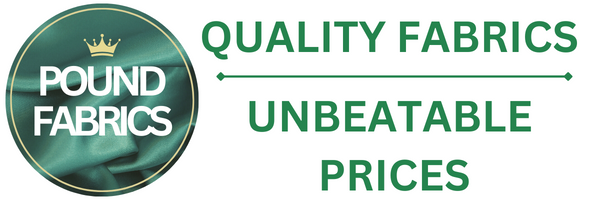
Velvet is the ultimate luxury fabric - nothing quite beats the cool, rich weight of velvet against your skin. Velvet requires a gentle hand and a little patience to sew, but the results are worthwhile for a stunning, elegant garment! This guide is designed to help make sewing Velvet easier, so that you don't waste any of your luxurious fabric and feel confident creating beautiful garments!
Whilst Velvet has strong historical links to European royalty - it is thought to originate from Eastern culture. Velvet, or 'quirong jin' and 'rongquan jin', was particularly popular in ancient China and Egypt where it was woven using Silk. The process to create the textile was particularly time consuming, so was reserved exclusively for royalty or the very rich. Eventually, Velvet was discovered by Western society, and entered into trade on the Silk road.
The first European country to produce Velvet was Italy, in the 12th-18th Century, shortly followed by Spain. Again, this textile was reserved exclusively for the wealthy, and was used in a variety of products, including; furniture, clothing, upholstery, curtains and even wallpaper! It was particularly popular during the Renaissance, where over the top glamour was key. During this period Velvet
was produced in even more decadent forms, in colours of Gold and Silver, with metallic yarns, and even in customised forms. Many rich families, royalty and members of the church commissioned special Velvet designs, such as coats of arms or biblical motifs during this period.
In the industrial revolution, the production of Velvet became mechanised, so it was much easier and faster to produce. This opened up the textile to a variety of classes, where it was still held as a glamorous fabric, used for gowns and shawls.
Velvet is now mass-produced from a variety of different fibres, not just Silk, including; Rayon, Cotton and Polyester, making it available in a wide range of different qualities and compositions, and at different price point.
How is velvet made?
Velvet is a dense fabric with a pile, originally made from Silk fibres. Velvet actually refers to the structure of the fabric, rather than the type of fibre, and this is typically woven with a pile of raised loops or tufts of yarn.
Velvet may be woven from a variety of fibres, which produce a selection of different style and quality textiles, including; Silk, Rayon, Cotton and Polyester.
Velvet fabric is made on a special type of loom, which allows the weaving of two separate pieces of fabric at the same time. The two pieces of cloth are woven on the loom, and then cut apart to create the textured pile surface, made from the weft yarns in the weave. The two separate lengths of fabric are then wound on to separate rolls.

What are the different types of velvet?
There are several different styles of Velvet that can be used in diverse ways, these include:
|
VELVET |
The traditional form of the textile. This fabric is thick and luxurious, and often has little give. If it is made from a fibre like silk, it can be extremely expensive. It may also be made from cheaper fibres such as viscose/rayon, polyester or cotton, which are more readily available and affordable. |
|
VELOUR |
Velour is a form of stretch velvet. This fabric is great for garments where traditional velvet is too thick or heavy to be used or does not have enough give. This form of velvet is often more lightweight and is commonly used for high-street garments as it is relatively inexpensive. |
|
CRUSHED VELVET |
Crushed Velvet is produced via traditional methods but is then treated once produced. Whilst still damp/wet, the Velvet textile is twisted to distort the fibre and pile. This creates a mottled surface effect, which alters the overall shine of the textile. |
|
DEVORE |
Devore is produced using traditional methods but is then treated with a chemical. A special paste is used to burn away the surface fibres in a pattern or design. Some of the pile is left behind, accentuating the design. |
How do you sew velvet?
You will need:
- Velvet fabric
- Thread –opt for a polyester blend, as this works best with stretch fabrics or blended fibres. silk thread is also brilliant for use with velvet
- Dressmaking scissors
- Sharp straight pins
- Sharps hand sewing needles
- Universal machine needle size 70
Cutting Velvet:
When cutting Velvet, be sure to use a sharp cutting tool. As Velvet is extremely slippery, we recommend using a sharp rotary cutter and mat. If you don't have a rotary cutter, you may use sharp dressmaking scissors, and be sure to lay the Velvet out smoothly on a flat surface. You will want to use a lot of pins and pattern weights, or a combination of both, as Velvet is so prone to moving around. Using both methods will ensure you get an accurate cut.
We also recommend cutting your Velvet in a single layer, as this will produce the most accurate cut. Bear in mind that this may change your pattern cutting layout, so double check your pattern for help with this. You may well need a little more fabric than your pattern suggests.
Make sure that you cut all of your pattern pieces with the nap/pile running the same way!
Stitching Velvet:
Velvet is actually relatively simple to sew with, despite being slippery and having a pile, if you use the right sized needle, and make sure you pin and cut everything accurately. To sew on a machine, ideally use a universal machine needle (around a size 70/10) or a Stretch machine needle if sewing Velour. Make sure that you use a sharp, fresh needle when sewing velvet as it can produce a lot of lint that blunts your needle.
When hand-sewing or tacking, use regular sharps needles. If your needle is not penetrating the Velvet easily, replace it with a fresh, sharp needle.
Thread selection should either be a 100% polyester thread or a polyester blended thread. This will ensure that the fabric and thread share similar properties, making for easier garment aftercare. Silk thread is also durable and high quality, so could be used for sewing more expensive styles of Velvet.
You do not need a special sewing machine foot to sew velvet, but it can be difficult to feed two layers of this slippery fabric through the machine at the same time. If you want extra help, try using a walking foot and lots of pins (although don't sew over them!) to keep the layers together evenly. You may also want to use a basting or tacking stitch to keep your fabric together.
Use a slightly longer stitch length to sew your Velvet, but as always, be sure to try a variety of stitches for your individual fabric, as this may vary! A longer stitch will help accommodate the pile of the Velvet.
Finishing Velvet:
Cut edges of Velvet and any seam will continue to unravel and fray if left unfinished, with wash and wear. The best way to finish your seams is to overlock them, but if you don't have your own overlocker or serger, you can use a simple zig-zag stitch on your machine to reduce the amount of fraying.
To hem your fabric, use a simple single fold, blind hem, as this is the least bulky.
Extra tips:
⇒Avoid Using Iron-On Interfacing - This is too bulky for use with Velvet and can damage the fabric as you have to apply it using heat, which can destroy the pile of the fabric. Instead, opt for a lightweight Silk Organza, or Organza weight fabric, which can be applied using stitches instead of heat.
⇒Use Tailors Tacks/Markers for Pattern Markings - These are the easiest thing to remove from a densely piled fabric.
⇒Loosen your Machine Tension - This allows the machine to accommodate the pile of the Velvet more effectively.
⇒Lower Presser Foot Pressure - This ensures that the feed dogs don't scar the pile of the fabric.
⇒Baste Seams - This prevents the fabric from shifting or slipping when sewing seams together. This can be done in combination with using pins to ensure accuracy.
⇒Avoid Pressing - This can damage the pile of your fabric and flatten it, ruining the soft, shiny effect. Instead, use steam and finger press, or press on a pressing board or towelling.
To see our full range of velvet and velour fabrics, please click here.
Make sure to tag us @poundfabrics and show us your creations on Instagram, Facebook and Twitter!
Copyright © 2019 Pound Fabrics. All Rights Reserved











Lynn Jackson
April 05, 2023
Thank you for this , very useful.